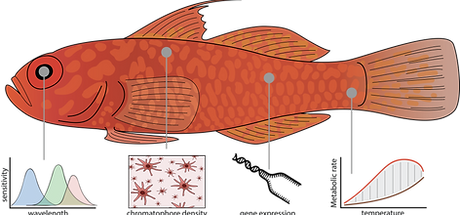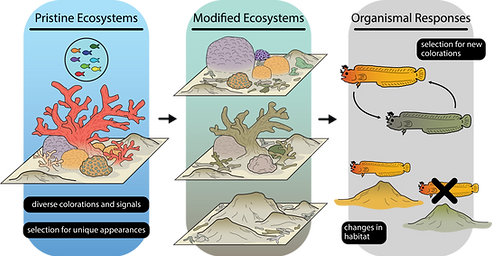top of page
Uncovering the evolutionary and ecologival factors shaping coloration (and other traits) across the tree of life
Organismal traits provide a universal language and a common thread to compare communities and ecosystems. The first main research objective of the TEA Lab is performing broadscale comparisons of traits and their corresponding evolutionary and ecological drivers acorss taxa and ecosystems. In doing so, we uncover the fundamental rules shaping phenotypes and the corresponding ecosystem functions they control.

Genetic, physiological, and behavioral mechanisms underpinning organismal traits in the natural world
While fundamental evolutionary, ecological, and environmental variables dictate the various appearances, morphologies, physiologies across organisms, individual-based mechanisms determine how and why these traits are expressed and how they function. The second research objective of the TEA Lab is to use organismal-focused experiemental approaches to understand how various traits, like coloration, arise and confer fitness benefits to the individual.

How are organisms coping with changes to ecosystems in the Anthropocene?
Earth has entered a new geological epoch, defined by pronouced changes to natural environments and processes. These fundmental changes to ecosystems have consequences for resident organisms who must quickly adapt to new environmental contexts. The third reserach objective of the TEA Lab seeks to understand how organisms are adapting (or failing) to novel ecosystem configurations in the Anthropocene. Ultimately, we seek to understand how these changes compound to affect the broader ecosystem functioning intrinsic to natural environments.

bottom of page


